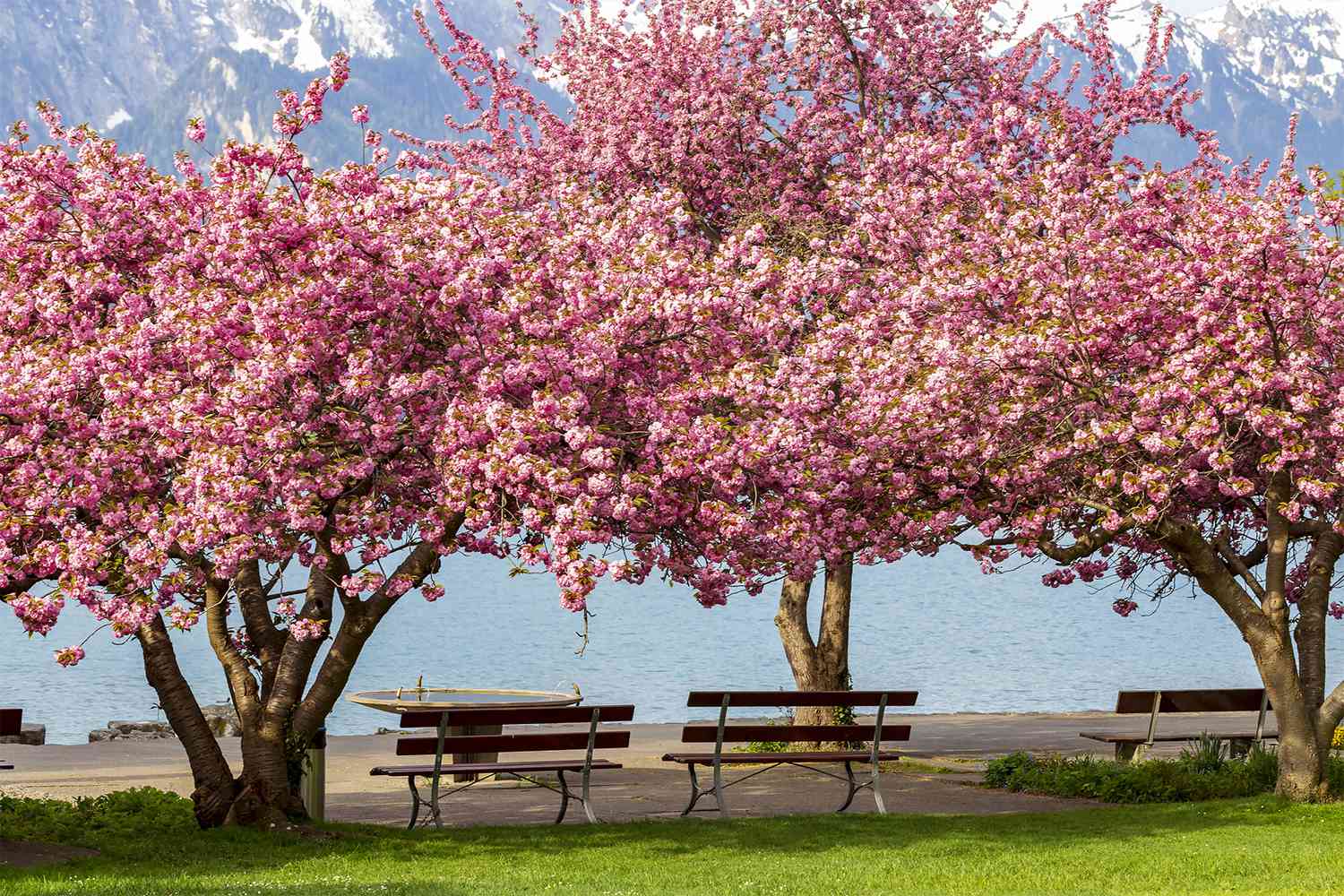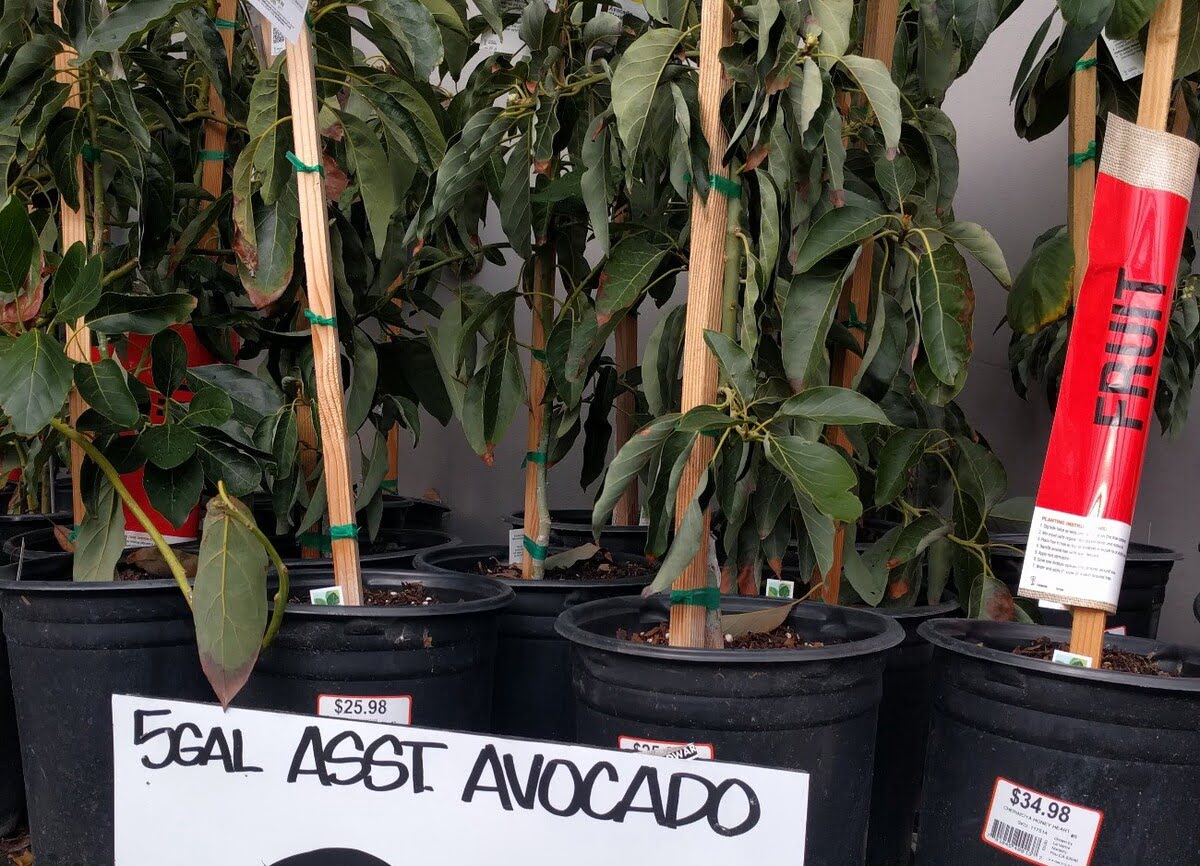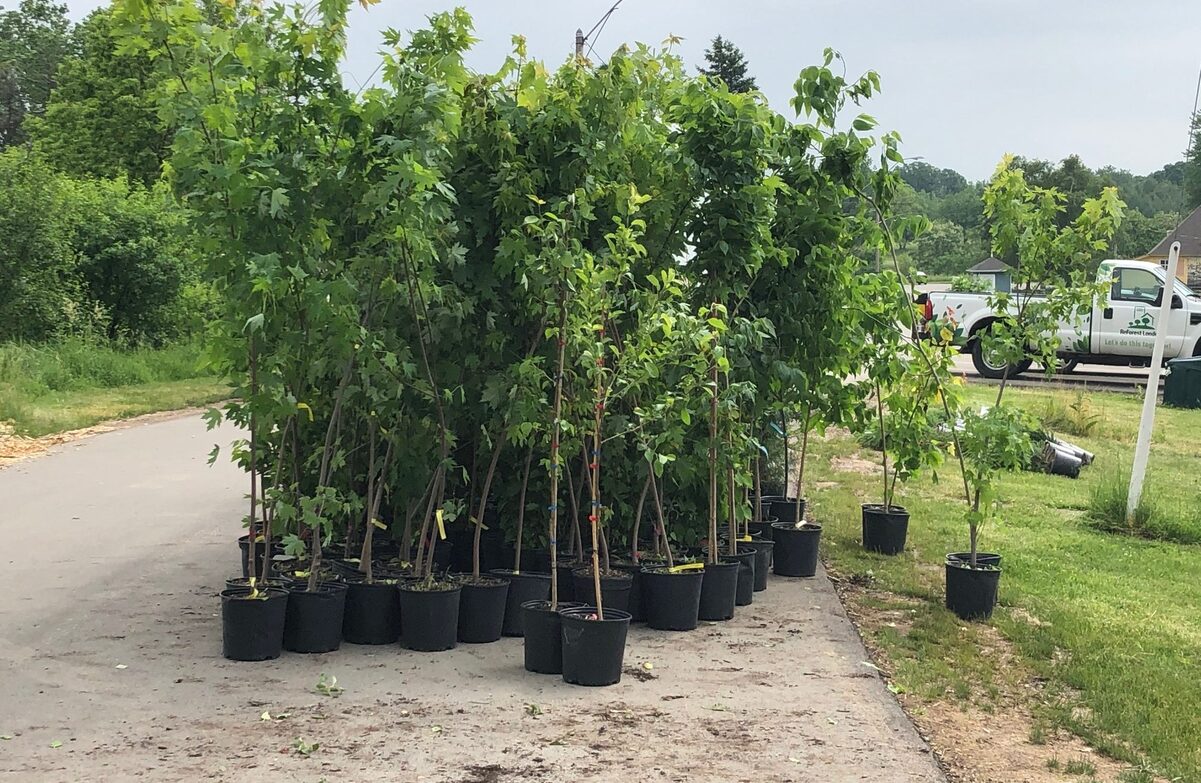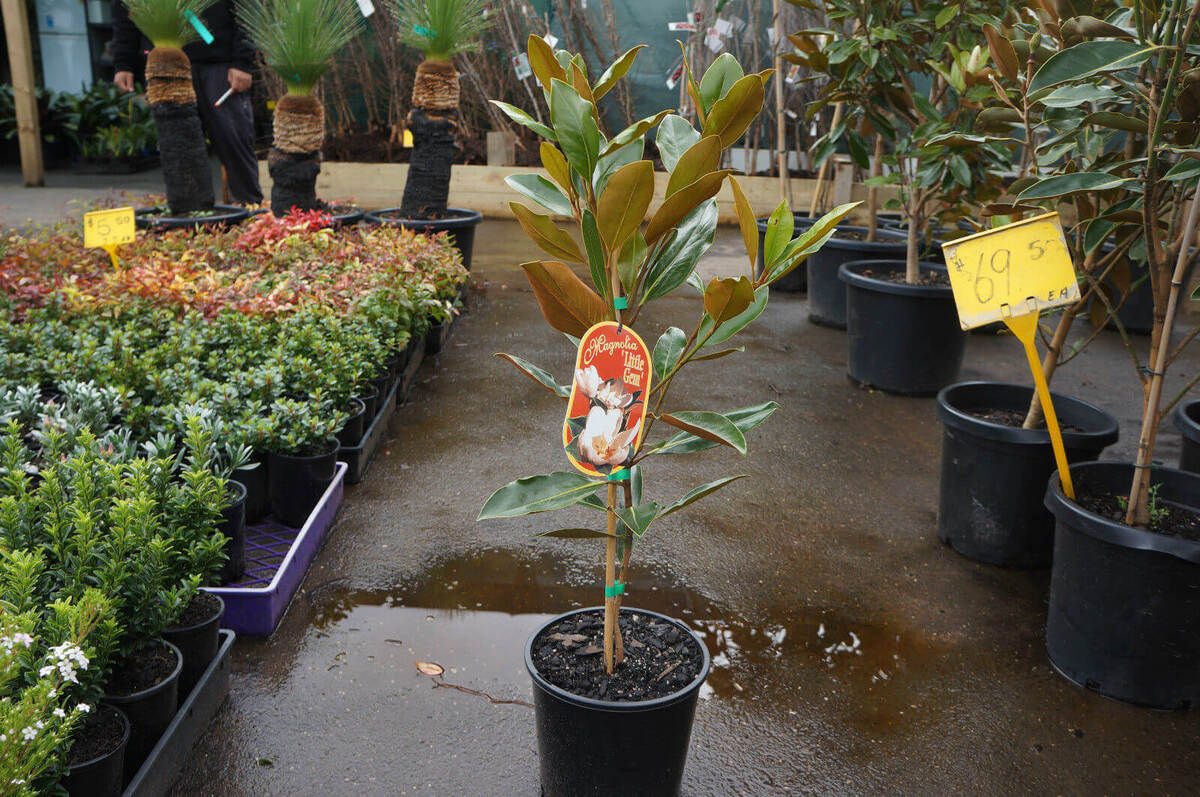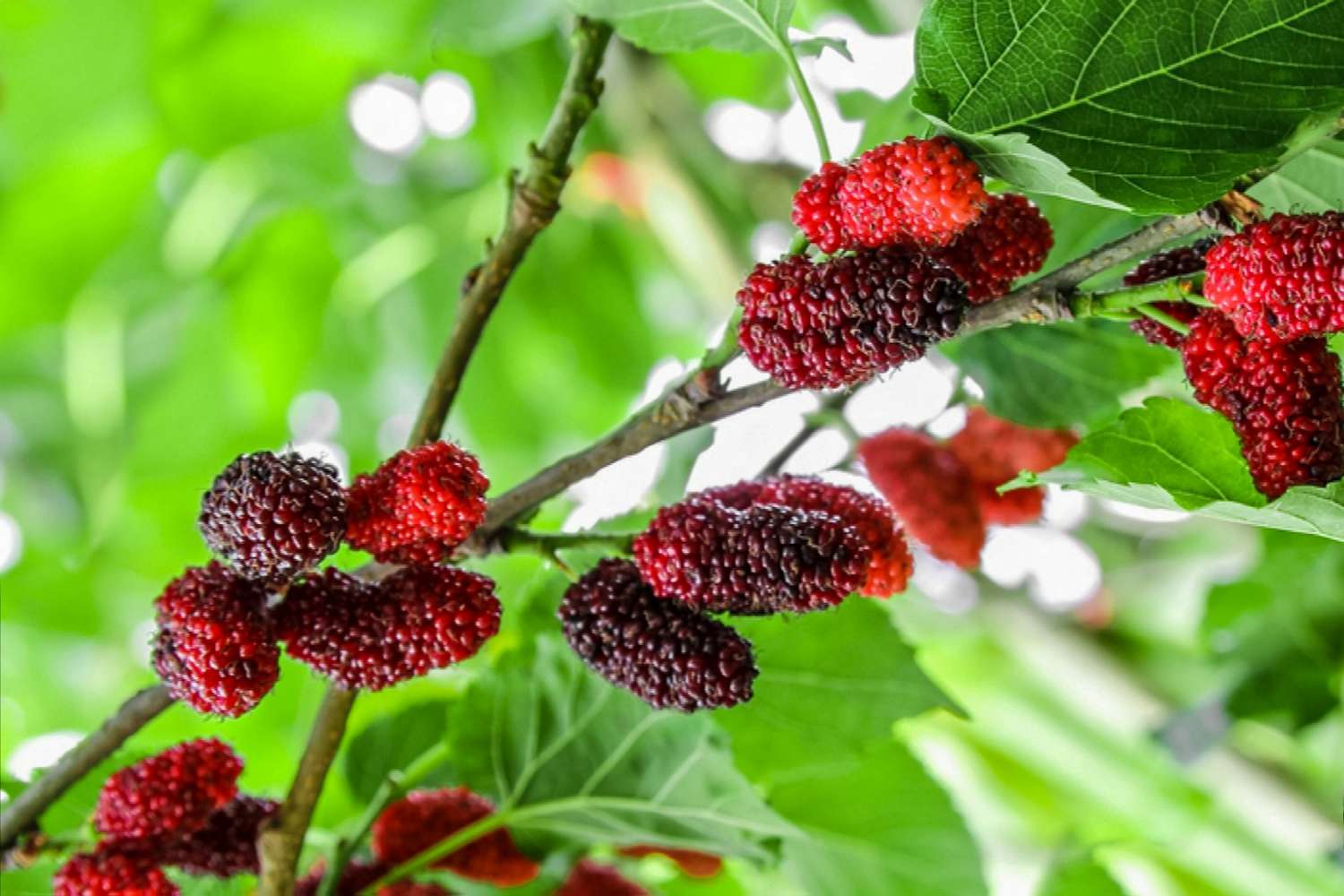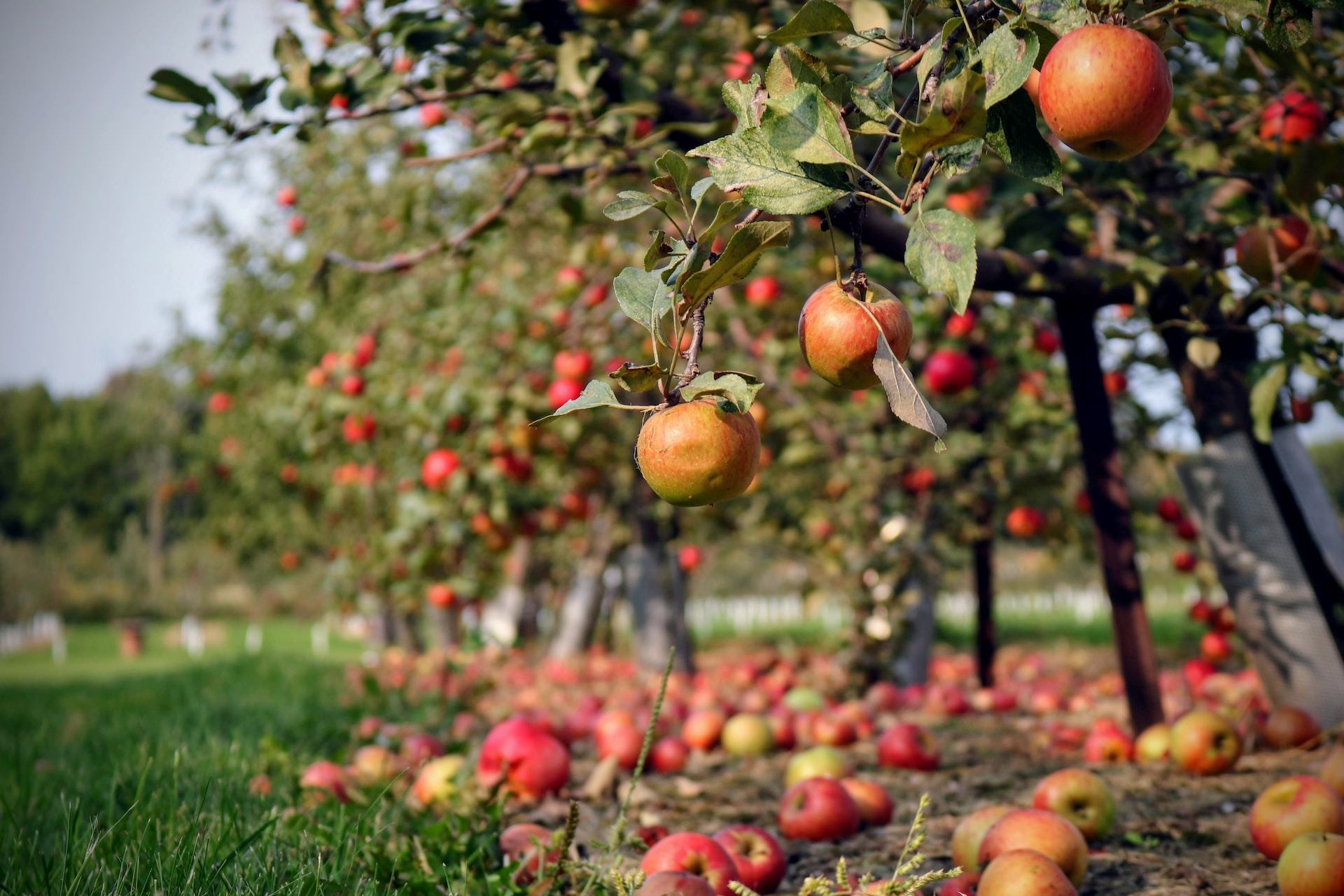Home>Types of Gardening>Ornamental Gardening>Where Are Acacia Trees Found
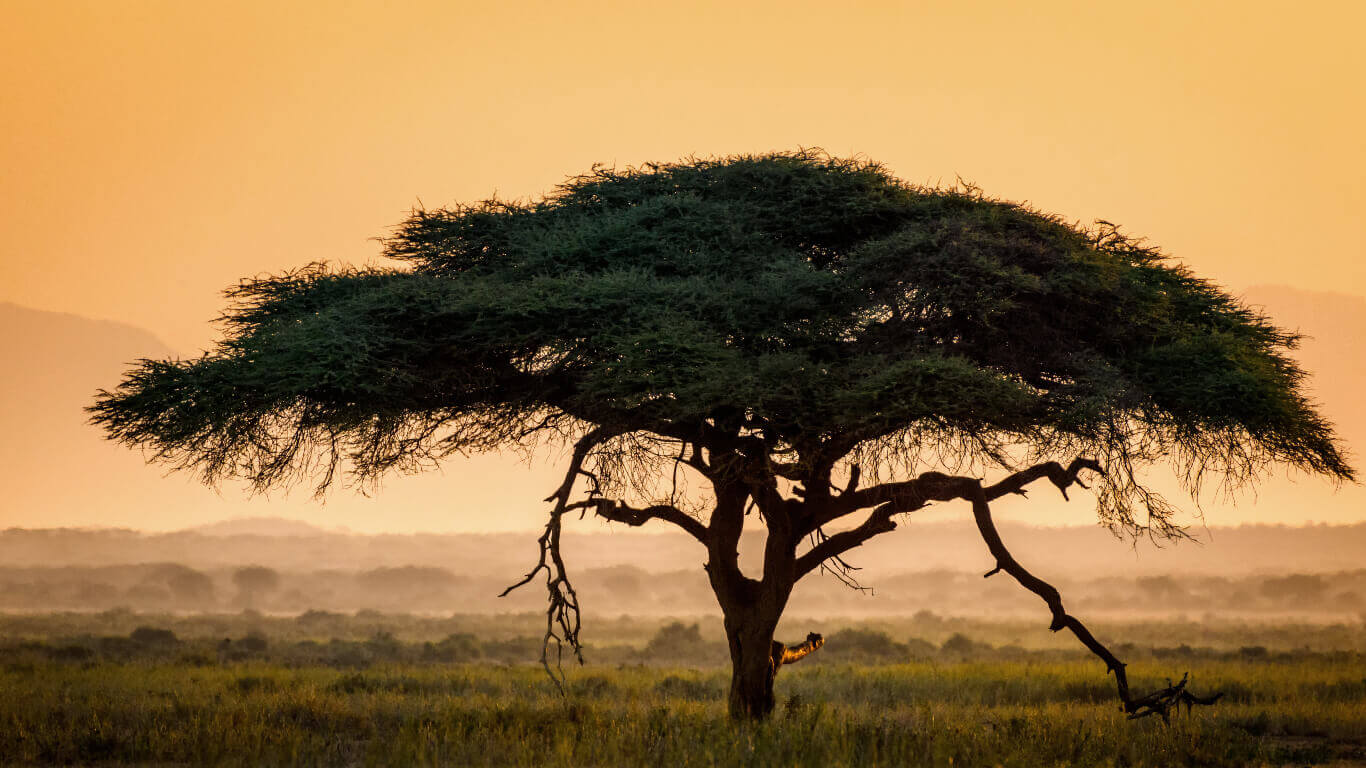

Ornamental Gardening
Where Are Acacia Trees Found
Modified: February 8, 2024
Discover the beauty of acacia trees in ornamental gardening. Learn where these stunning trees can be found and how to incorporate them into your garden design.
(Many of the links in this article redirect to a specific reviewed product. Your purchase of these products through affiliate links helps to generate commission for Chicagolandgardening.com, at no extra cost. Learn more)
Table of Contents
Introduction
Ornamental gardening is a fascinating and rewarding hobby that allows individuals to create beautiful and aesthetically pleasing landscapes. Whether you have a sprawling backyard or a small balcony, there are countless possibilities for creating stunning ornamental gardens that will be the envy of your neighbors.
Ornamental gardening involves the cultivation of plants primarily for their beauty and decorative purposes. This can include a wide range of plants, including flowers, shrubs, trees, and even ornamental grasses. The goal is to create a visually appealing garden that combines colors, textures, and shapes to create a harmonious and captivating display.
One of the key elements of ornamental gardening is selecting the right plants for your garden. This requires an understanding of various factors such as soil type, sunlight exposure, and climate conditions. By choosing the right plants for your specific environment, you can ensure that your garden thrives and remains beautiful throughout the year.
Another important aspect of ornamental gardening is the design and layout of the garden. This includes considerations such as the arrangement of plants, the use of pathways and structures, and the incorporation of decorative elements such as sculptures or water features. The design of the garden should not only be visually appealing but also functional and practical to maintain.
In recent years, ornamental gardening has gained popularity as more and more people realize the benefits of having a beautiful outdoor space. Not only does an ornamental garden enhance the aesthetic appeal of a property, but it also provides a tranquil and peaceful setting to relax and unwind.
Whether you are a seasoned gardener or a beginner, ornamental gardening offers endless possibilities for creativity and self-expression. With a little planning, research, and dedication, you can create a stunning ornamental garden that reflects your personal style and brings joy to your life.
Distribution of Acacia Trees
Acacia trees are a diverse group of plants that belong to the family Fabaceae. They are native to various regions around the world and can be found in a wide range of habitats, from arid deserts to tropical rainforests. The distribution of acacia trees is influenced by factors such as climate, soil conditions, and geographical barriers.
Acacia trees have a prominent presence in Africa, Australia, Asia, and the Americas. Let’s explore their distribution in each of these regions:
- Africa: Africa is home to a significant number of acacia species. Acacia trees can be found in various countries across the continent, including Kenya, Tanzania, South Africa, and Sudan. These trees are well adapted to the hot and dry conditions of the African savannas and play a crucial role in the ecosystems by providing food and habitat for numerous animal species.
- Australia: Australia is renowned for its diverse and unique flora, and acacia trees are no exception. They are abundant in various parts of the country, particularly in the arid regions. Acacia trees, commonly known as wattles, are highly valued for their vibrant yellow flowers and are often used in landscaping projects and for their timber.
- Asia: Acacia trees can be found in several Asian countries, including India, Pakistan, Thailand, and Indonesia. In these regions, acacia trees serve multiple purposes, such as providing shade, stabilizing soil, and acting as windbreaks. They are also an important resource for timber and fuelwood.
- Americas: Acacia trees have been introduced to various countries in the Americas, including the United States, Mexico, and Argentina. In these regions, they are often grown for their ornamental value and are appreciated for their unique foliage and flowers.
The distribution of acacia trees is not limited to these regions alone. Some acacia species can also be found in parts of Europe, particularly along the Mediterranean coasts.
Overall, acacia trees are adaptable and resilient, allowing them to thrive in a variety of climates and habitats around the world. Their widespread distribution is a testament to their ability to adapt and survive in diverse environmental conditions.
Acacia Trees in Africa
Africa is a continent rich in biodiversity, and acacia trees play a prominent role in shaping its landscapes. Acacia trees are native to Africa and can be found in various countries across the continent.
One of the most iconic images of the African savanna is the Acacia tree standing tall and majestic against the backdrop of wide-open grasslands. Acacia trees have adapted to thrive in the hot and arid conditions of the African savannas, making them a vital component of the ecosystem.
Acacia trees in Africa are known for their distinctive umbrella-like crowns and thorny branches. They provide shade and shelter for a multitude of animal species, including elephants, giraffes, and various bird species. The branches and leaves of acacia trees serve as a source of food for herbivores, while the thorns act as a defense mechanism against potential predators.
Several species of acacia trees are found in Africa, including the Acacia senegal, Acacia tortilis, and Acacia xanthophloea. Acacia senegal, also known as Gum Arabic tree, is prized for its gum arabic, a natural gum with various industrial and culinary uses. Acacia tortilis, commonly known as the umbrella thorn, is a hardy tree that can withstand harsh environments and is often a dominant species in the African savannas. Acacia xanthophloea, commonly called the fever tree, is recognizable by its bright yellow bark and is a characteristic tree of wetland areas.
In addition to their ecological importance, acacia trees also hold cultural significance in many African communities. They are symbols of resilience, strength, and survival, serving as sources of inspiration and traditional medicine.
Acacia trees in Africa are not only found in the savannas but also thrive in different habitats such as woodlands and grassy plains. Their adaptability to various soil types and climates is a testament to their resilience and longevity.
Overall, the presence of acacia trees in Africa is a testament to their role as keystone species in the continent’s ecosystems. They contribute to the intricate web of life by providing habitats, food sources, and other valuable resources. Acacia trees not only enhance the beauty of the African landscapes but also play a vital role in maintaining the delicate balance of nature.
Acacia Trees in Australia
Australia is known for its diverse and unique flora, and acacia trees are a prominent feature of the country’s landscapes. Acacia trees, commonly known as wattles, have a rich presence in various parts of Australia.
With over 1,000 known species of acacia, Australia is home to one of the most extensive collections of acacia trees in the world. These trees can be found in a wide range of habitats, from coastal regions to arid deserts.
One of the most remarkable characteristics of acacia trees in Australia is their vibrant and eye-catching flowers. Many acacia species produce stunning yellow blooms, which contribute to the colorful tapestry of the Australian bushland. These flowers not only add beauty to the natural landscape but also attract pollinators such as birds and insects.
Acacia trees in Australia have multiple uses and are highly valued in various industries. The timber produced by acacia trees is durable and versatile, making it suitable for furniture, flooring, and construction. Additionally, the bark, seeds, and leaves of some acacia species have traditional and medicinal uses.
Acacia trees also play a crucial role in the ecology of Australia. They provide shelter and food for a diverse range of wildlife, including birds, insects, and small mammals. The deep root systems of acacia trees assist in stabilizing soil and preventing erosion, particularly in regions prone to drought and desertification.
Acacia trees have also become popular in landscaping projects across Australia. Their ability to thrive in various soil types and climates, along with their attractive foliage and flowers, make them a desirable choice for gardens and urban green spaces.
It is important to note that acacia trees in Australia are not limited to a particular region but can be found throughout the country. From the expansive acacia woodlands of Western Australia to the coastal regions of New South Wales, these trees add beauty and character to the Australian landscape.
Overall, the diversity and abundance of acacia trees in Australia contribute to the country’s unique flora and play a crucial role in supporting its ecosystems. Whether it’s their stunning flowers, valuable timber, or ecological significance, acacia trees continue to leave their mark on the Australian natural environment.
Acacia Trees in Asia
Acacia trees have a notable presence in various parts of Asia, adding to the region’s diverse and stunning flora. These trees are adaptable and can be found in different countries across Asia, flourishing in a range of habitats.
In India, acacia trees are commonly seen in arid and semi-arid regions. The Acacia nilotica, also known as the babul tree, is native to India and is highly valued for its timber, which is used in the construction industry. Acacia trees are also significant in traditional medicine, with different parts of the tree being used to treat various ailments.
In Indonesia, the Acacia mangium and Acacia crassicarpa are cultivated for their fast growth and timber production. These trees are commonly found in plantations and are used for various commercial purposes, including the production of furniture, plywood, and pulpwood.
Acacia trees can also be seen in other Asian countries such as Pakistan, Thailand, and Malaysia. In these regions, acacia trees are appreciated for their ability to thrive in various soil types and climates.
The ecological role of acacia trees in Asia is also significant. They contribute to soil stabilization and erosion control, particularly in regions prone to desertification. The dense canopy and extensive root systems of acacia trees help in preventing soil erosion and maintaining the fertility of the land.
Acacia trees in Asia often serve as valuable sources of food and shelter for numerous wildlife species. Birds, insects, and small mammals make use of the trees for nesting, feeding, and protection. Some acacia species also have flowers that attract pollinators, adding to the biodiversity of the region.
Additionally, acacia trees have cultural and traditional importance in many Asian communities. They are used for various purposes, such as woodcraft, traditional ceremonies, and even as symbols of good luck and prosperity.
Overall, acacia trees in Asia contribute to the region’s natural beauty, ecological balance, and cultural heritage. Their adaptability, multiple uses, and ecological significance make them an integral part of the Asian landscape.
Acacia Trees in the Americas
While acacia trees are native to Africa, they have also been introduced to various countries in the Americas, where they have adapted well to the local environments. Acacia trees can be found in North, Central, and South America, adding to the botanical diversity of the region.
In the United States, acacia trees can be seen in states such as California, Arizona, and Florida. One popular species is the Acacia dealbata, commonly known as the silver wattle or mimosa tree. This tree is known for its feathery foliage and bright yellow flowers, making it a favorite choice for landscaping and ornamental gardening.
An introduced species, the Acacia koa, is native to Hawaii and is highly valued for its beautiful wood, which is used for furniture and crafts. The koa tree is considered a symbol of Hawaii’s native forests and is an important part of the islands’ cultural and natural heritage.
In South America, countries such as Argentina and Chile are home to acacia trees. The Acacia caven, also known as the espinillo, is a native species that thrives in the dry and arid regions of these countries. Its branches are covered in sharp thorns, providing protection against herbivores.
The presence of acacia trees in the Americas is not limited to these examples. There are other species found across the region, each with its own unique characteristics and adaptations.
Acacia trees in the Americas serve various purposes. They are often grown for their ornamental value, adding beauty and color to gardens and landscapes. Some species also provide valuable sources of timber, with their wood being used for furniture, flooring, and crafts.
Ecologically, acacia trees in the Americas provide habitats and food sources for a diverse range of wildlife. Their branches offer nesting sites for birds and other small animals, while their flowers attract pollinators like bees and butterflies.
Overall, acacia trees in the Americas contribute to the region’s biodiversity, cultural significance, and aesthetic appeal. Whether in urban gardens or natural environments, these trees add to the diverse tapestry of the American landscape.
Acacia Trees in Europe
While acacia trees are primarily native to Africa, Australia, and parts of Asia, they have also found their way to certain regions of Europe. Acacia trees in Europe are not as widespread as in other continents, but they still contribute to the botanical diversity of the region.
One region in Europe where acacia trees can be found is the Mediterranean. The Acacia vericosa, also known as the Mediterranean acacia or golden mimosa, is a species that thrives in the warm and dry climate of the Mediterranean coast. Its bright yellow flowers give a vibrant touch to the landscapes of countries such as Spain, Italy, and Greece.
In some parts of Europe, acacia trees are grown for their timber. The Acacia melanoxylon, commonly known as blackwood, is a fast-growing tree that produces a dark, durable timber. This timber is used in various applications, including flooring, furniture, and cabinetry.
It is important to note that acacia trees in Europe are often not native to the region and are instead introduced species. They have been cultivated for their ornamental value and their ability to withstand the climatic conditions of certain European countries.
Acacia trees in Europe, although less common compared to other continents, still play a role in ecological systems. They provide habitats for insects, birds, and other small animals and serve as a food source for some pollinators. Furthermore, their extensive root systems help in preventing soil erosion and promoting soil health.
In addition to their ecological significance, acacia trees in Europe have cultural and historical importance. Some species have been introduced for their beautiful flowers and are often associated with springtime celebrations and festivals.
Overall, while acacia trees in Europe may not be as prevalent as in other continents, they still contribute to the biodiversity and aesthetics of certain regions. Whether it be for their ornamental value or ecological contributions, acacia trees add a touch of natural beauty to the European landscape.
Climate and Habitat Preferences
Acacia trees have diverse climate and habitat preferences, allowing them to thrive in various regions around the world. Their adaptability to different environments is one of the reasons for their widespread distribution.
The climate preference of acacia trees varies depending on the species. Generally, they are well suited to regions with warm to hot temperatures, although some species can withstand cooler climates. Acacia trees are often found in areas with distinct wet and dry seasons, as they have the ability to withstand drought and periods of water scarcity.
In terms of habitat preferences, different species of acacia trees have adapted to a wide range of environments. Some prefer arid and semi-arid regions, where they have developed mechanisms to conserve water, such as small leaves and thorny branches to reduce moisture loss. These species are commonly found in desert-like landscapes and savannas.
On the other hand, certain acacia trees thrive in more tropical or subtropical climates, where they can be found in rainforests or humid regions. These species have larger leaves and often exhibit a more lush and dense growth form.
Acacia trees also exhibit a preference for specific soil types. They can grow in various soil conditions, including sandy soils, loamy soils, and even nutrient-poor soils. Some species have even developed symbiotic relationships with nitrogen-fixing bacteria, allowing them to thrive in nutrient-deficient environments.
While acacia trees can tolerate different habitats and climates, they have their limits. Extreme cold temperatures, flooding, or prolonged waterlogging can be detrimental to their growth and survival. They also require a certain amount of sunlight to thrive, although some species can tolerate partial shade. Overall, a balance of proper climate, soil conditions, and sunlight exposure is crucial for the health and growth of acacia trees.
Understanding the climate and habitat preferences of acacia trees is essential when considering their cultivation and landscaping. By choosing the appropriate species and providing the ideal conditions, whether in a garden or natural environment, one can ensure the successful growth and longevity of these remarkable trees.
Importance and Uses of Acacia Trees
Acacia trees hold significant importance and have a wide range of uses across various cultures and industries. Their versatility and adaptability make them valuable in different aspects of human life and the environment.
One of the primary uses of acacia trees is as a source of timber. The wood produced by certain acacia species is highly valued for its strength, durability, and natural beauty. It is used in the manufacturing of furniture, flooring, cabinetry, and even musical instruments.
In addition to timber, certain species of acacia trees produce gum resin that has commercial value. Gum arabic, derived from the Acacia senegal tree, is widely used in the food and beverage industry as a stabilizer, thickener, and emulsifier. It is also utilized in various other applications such as printing ink, pharmaceuticals, and cosmetics.
Acacia trees are also important in traditional medicine. Different parts of acacia trees, including the bark, leaves, and seeds, have been used for centuries in various cultures to prepare remedies for different ailments. These remedies may include treatments for skin disorders, digestive issues, and respiratory ailments.
Ecologically, acacia trees play a crucial role in maintaining and enhancing biodiversity. They provide habitats and food sources for numerous animal species, including insects, birds, and small mammals. The presence of acacia trees can promote ecological balance and support a wide range of organisms in their surrounding ecosystems.
Furthermore, acacia trees offer various ecosystem services. Their deep root systems help prevent soil erosion, especially in regions prone to drought and desertification. Acacia trees also play a role in carbon sequestration, helping to mitigate climate change by absorbing and storing carbon dioxide from the atmosphere.
In landscaping, acacia trees are often planted for their aesthetic appeal. Their unique forms, colorful flowers, and interesting foliage add beauty and visual interest to gardens, parks, and urban landscapes.
Culturally, acacia trees hold significance in many societies. They are often seen as symbols of resilience, strength, and endurance. In some cultures, acacia trees are associated with spiritual beliefs and are incorporated into ceremonies and rituals.
Overall, the importance and uses of acacia trees extend beyond their beauty and environmental contributions. From timber and gum production to traditional medicine and ecological benefits, these versatile trees continue to have a meaningful impact on society and the natural world.
Conclusion
Ornamental gardening offers individuals the opportunity to create stunning and visually pleasing landscapes that bring joy and beauty to their surroundings. Whether it’s the vibrant colors of flowers, the elegant structure of shrubs, or the majestic presence of trees, ornamental gardens allow for endless creativity and self-expression.
Throughout this article, we have explored the distribution of acacia trees in different regions of the world, including Africa, Australia, Asia, the Americas, and even parts of Europe. Acacia trees have proven to be adaptable and resilient, thriving in a range of climates, habitats, and soil conditions.
We have learned about the ecological significance of acacia trees, as they provide habitat and food sources for various animal species. Acacia trees also offer important ecosystem services, such as preventing soil erosion and contributing to carbon sequestration.
Furthermore, acacia trees serve multiple purposes in human societies. They provide valuable timber for construction and furniture making, and the gum produced by certain species has commercial applications in the food and beverage industry. Acacia trees have also played a role in traditional medicine, offering remedies for various ailments.
From a cultural perspective, acacia trees hold symbolic meaning and significance in many communities. They are associated with resilience, strength, and endurance, and are incorporated into ceremonies and rituals.
In conclusion, the world of ornamental gardening is enriched by the presence of acacia trees. Their beauty, adaptability, and importance in various industries and cultures make them a valuable asset to any landscape. Whether it’s the sweeping acacia trees of the African savannas, the vibrant wattles of Australia, or the elegant acacias in gardens around the world, these trees captivate and inspire us with their unique characteristics.
